.jpg)
When I think of Oregon Pinot Noir, a seven-year-old Yo-Yo Ma playing the cello for the greats of the musical and political world comes to mind. Oregon’s meteoric rise is hardly less shocking than the poise and presence of the young musician. In just two decades, the acres under vine in Oregon more than tripled, the number of wineries increased over 500%, and its place on wine lists across the globe has been assured. When one reaches for a bottle of American Pinot Noir, it is Oregon that comes to mind. While some of the meteoric rise can be attributed to the growing popularity of the grape itself, the interest in quality and the dedication to the terroir and climate of the region is what propelled Oregon wine, and Willamette Pinot Noir specifically, to the forefront.
A Bit of History
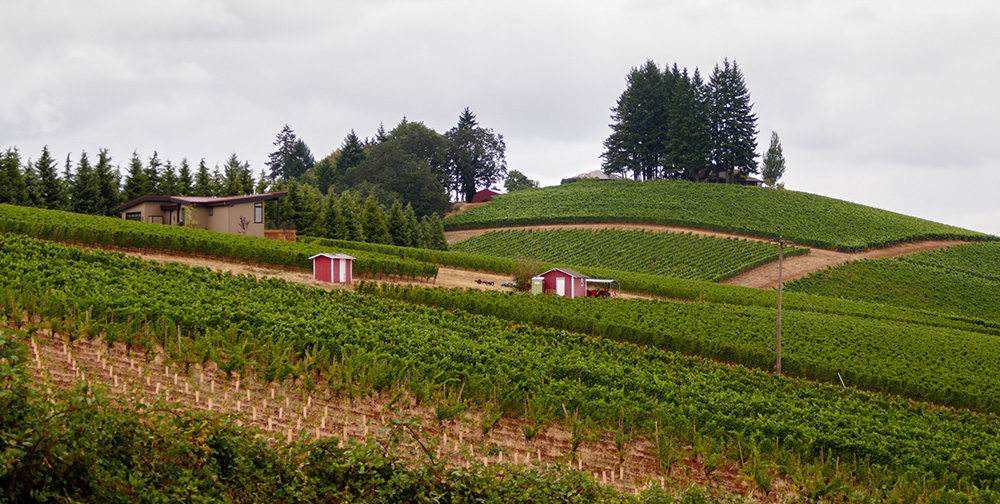
The history of Oregon wine began in the 1960s, with a group of bold pioneers who believed that the finicky, thin-skinned grape like Pinot Noir could thrive in the cool climate of the state. There were many reason not to plant Vitis vinifera grapes in Oregon – it was considered too cold, too wet and that would lead to rot, mildew and under-ripe grapes. However, the Willamette Valley is unusually situated, being protected by two mountain ranges, the Coast Range and the Cascade Range. The mountains keep the humidity and the rain away from the valley in the summer, keeping the precipitation to a minimum during the key months of July, August and September. This allows the Pinot Noir grapes to mature and ripen in the alternating hot summer days and cool nights. The average temperature during the growing season in Willamette Valley is less than one degree below that of Burgundy; and its similar latitude offers a generous 15 plus hours of daylight during the season.
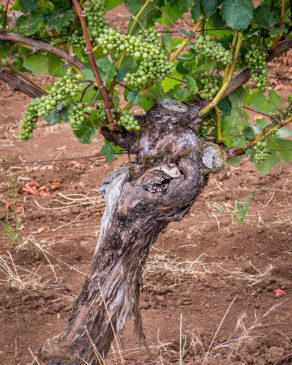 In 1970, there were less than 100 acres of Vitis vinifera in Oregon, and only five wineries. The pioneers of the region came to the Valley with a dream, but without much money. This lead to an early spirit of collaboration. Diana Lett, of Eyrie Vineyards, recalls the early days of Oregon wine in the “Oregon Wine: Grapes of Place” documentary; “the one thing that all of our early wine community had in common was poverty. The banks would not loan us any money … because we were young and because we were doing something that hadn’t been done before and there was no assurance we would be able to pull it off.” The early wineries worked together to ensure that no virus-ridden vines were brought in. In 1973, Oregon Senate Bill 100 was passed, preserving hillsides of the valley from urban development and ensuring the future of Oregon wine. In 1977, the winemakers worked together to pass strict labeling regulations, requiring 100% of the grapes to be grown in Oregon and 95% of grapes to be grown in the AVA (American Viticultural Area) named on the label. There was much to learn, but the comradery of the pioneers led to the quick growth of the industry. And, only a decade later, came the shocking tasting of 1979. In 1970, there were less than 100 acres of Vitis vinifera in Oregon, and only five wineries. The pioneers of the region came to the Valley with a dream, but without much money. This lead to an early spirit of collaboration. Diana Lett, of Eyrie Vineyards, recalls the early days of Oregon wine in the “Oregon Wine: Grapes of Place” documentary; “the one thing that all of our early wine community had in common was poverty. The banks would not loan us any money … because we were young and because we were doing something that hadn’t been done before and there was no assurance we would be able to pull it off.” The early wineries worked together to ensure that no virus-ridden vines were brought in. In 1973, Oregon Senate Bill 100 was passed, preserving hillsides of the valley from urban development and ensuring the future of Oregon wine. In 1977, the winemakers worked together to pass strict labeling regulations, requiring 100% of the grapes to be grown in Oregon and 95% of grapes to be grown in the AVA (American Viticultural Area) named on the label. There was much to learn, but the comradery of the pioneers led to the quick growth of the industry. And, only a decade later, came the shocking tasting of 1979.
In 1979, Becky Wasserman, an importer of wines from Burgundy, bought two bottles of the 1975 Eyrie South Block Reserve Pinot Noir from David and Diana Lett and entered them into the Gault-Millau Wine Olympiad. Eyrie took the 10th place, causing an immediate stir. A follow-up tasting was held in Burgundy, where the Eyrie came in second, only a hair below the 1959 Drouhin Chambolle-Musigny, further cementing the reputation and potential of Oregon wines.
The 1980s were cataclysmic for the region, not only with the eruption of Mt. St Helens, but for the Oregon Wine industry. As the wines continued to 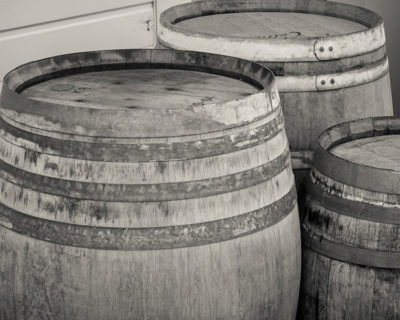 impress critics and drinkers alike, the valley began to attract outside investment, most prominently – the Drouhin family of Burgundy. By the early 90s, Willamette Valley was on its way to the top, and, through its influence, continues to raise the banner of both quality and sustainability. Although Oregon accounts for only 1% of all wine made in the USA, it garners 20% of 90+ scores for domestic wines from the Wine Spectator. Dedication to sustainable approaches are equally impressive. Forty-seven percent of all Oregon vineyards are certified sustainable, and out of only 14 wineries from around the world that are certified as B Corp businesses – five are in Oregon. impress critics and drinkers alike, the valley began to attract outside investment, most prominently – the Drouhin family of Burgundy. By the early 90s, Willamette Valley was on its way to the top, and, through its influence, continues to raise the banner of both quality and sustainability. Although Oregon accounts for only 1% of all wine made in the USA, it garners 20% of 90+ scores for domestic wines from the Wine Spectator. Dedication to sustainable approaches are equally impressive. Forty-seven percent of all Oregon vineyards are certified sustainable, and out of only 14 wineries from around the world that are certified as B Corp businesses – five are in Oregon.
The Rocks and the Slopes
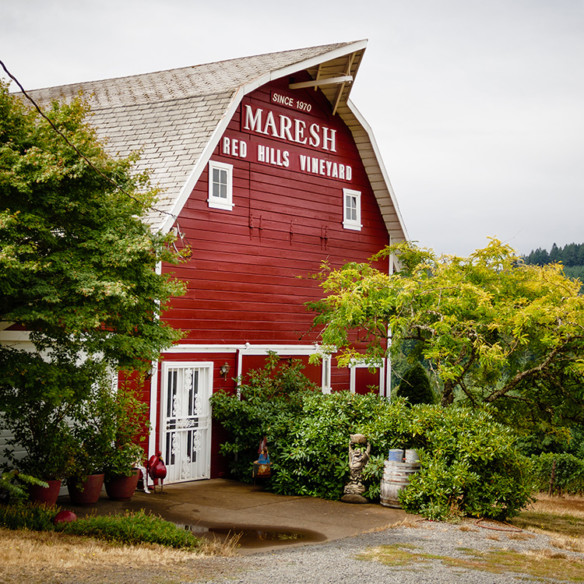 Within the larger Willamette Valley AVA, established in 1983, seven smaller growing areas have achieved their own AVA status. Combined, they represent the majority of the northern Willamette Valley and contain sixty percent of the current acreage under vine. Six (Chehalem Mountains, Dundee Hills, Yamhill-Carlton, Eola-Amity Hills, Ribbon Ridge and McMinnville) were established in 2005-2006, and one, the Van Duzer Corridor AVA, was added just this year. The seven AVAs are differentiated by their geography and climate, and thus provide an additional insight into the wines grown there. While I would not suggest that the AVA dictates a style, knowing the climate is beneficial to understanding more about the fruit, and thus the wine itself. There are three major soil types present in the Valley: the Marine Sedimentary soils, created millions of years ago when the whole region was submerged under the Pacific Ocean; the red Volcanic Basalt soils, from the volcanic activity that resulted in lava flows throughout northern Oregon; and, finally, the windblown “loess” soils, deposited in the Valley during the last ice age. Within the larger Willamette Valley AVA, established in 1983, seven smaller growing areas have achieved their own AVA status. Combined, they represent the majority of the northern Willamette Valley and contain sixty percent of the current acreage under vine. Six (Chehalem Mountains, Dundee Hills, Yamhill-Carlton, Eola-Amity Hills, Ribbon Ridge and McMinnville) were established in 2005-2006, and one, the Van Duzer Corridor AVA, was added just this year. The seven AVAs are differentiated by their geography and climate, and thus provide an additional insight into the wines grown there. While I would not suggest that the AVA dictates a style, knowing the climate is beneficial to understanding more about the fruit, and thus the wine itself. There are three major soil types present in the Valley: the Marine Sedimentary soils, created millions of years ago when the whole region was submerged under the Pacific Ocean; the red Volcanic Basalt soils, from the volcanic activity that resulted in lava flows throughout northern Oregon; and, finally, the windblown “loess” soils, deposited in the Valley during the last ice age.
The Chehalem Mountains, distinctive for its Bald Peak (highest point in the valley), is the northernmost AVA. The high ridges offer protection from the 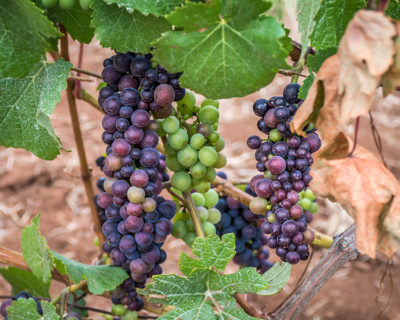 strong winds and the predominant soil here is the windblown loess. The Yamhill-Carlton AVA is on the Northwestern side of the Valley, protected on the west by the Coastal Range, and is comprised mainly of marine sedimentary soils. The warmer weather and the well-drained soils result in riper, richer wines. Ribbon Ridge AVA is contained within the Chehalem Mountains AVA but it is composed entirely of Willakenzie (marine sedimentary) soil. The lack of water and the lower elevation of the Ridge results in perfumed, riper wines. The Dundee Hills AVA is home to the famous red basalt soils called Jory, which provide excellent drainage and a complex mineral structure. Well protected from both sides by the Coastal range on the west and the Chehalem Mountains to the east, the hills offer an ideal climate for Pinot Noir. Eola-Amity Hills contains much of the same volcanic soil, but the cooler temperature, with the ocean winds coming through the Van Duzer Corridor, dramatically alter the climate. The cool afternoon winds lead to smaller berries and higher acidity in the vines, which leads to wines with greater tannic structure and zestier, brighter mid-palates. The extremely thin topsoil of the McMinnville AVA forces the vines to struggle, bringing out darker, spicier notes in the wines. Van Duzer Corridor, the youngest AVA, is known for its unique wind-tunnel effect. The winds from the coast begin as early as 2:00 PM and, while lowering average temperatures, dry the canopy relieving fungal pressure. The marine sediment soils drain easily and the winds thicken the skins of the grapes, leading to darker, earthier wines. strong winds and the predominant soil here is the windblown loess. The Yamhill-Carlton AVA is on the Northwestern side of the Valley, protected on the west by the Coastal Range, and is comprised mainly of marine sedimentary soils. The warmer weather and the well-drained soils result in riper, richer wines. Ribbon Ridge AVA is contained within the Chehalem Mountains AVA but it is composed entirely of Willakenzie (marine sedimentary) soil. The lack of water and the lower elevation of the Ridge results in perfumed, riper wines. The Dundee Hills AVA is home to the famous red basalt soils called Jory, which provide excellent drainage and a complex mineral structure. Well protected from both sides by the Coastal range on the west and the Chehalem Mountains to the east, the hills offer an ideal climate for Pinot Noir. Eola-Amity Hills contains much of the same volcanic soil, but the cooler temperature, with the ocean winds coming through the Van Duzer Corridor, dramatically alter the climate. The cool afternoon winds lead to smaller berries and higher acidity in the vines, which leads to wines with greater tannic structure and zestier, brighter mid-palates. The extremely thin topsoil of the McMinnville AVA forces the vines to struggle, bringing out darker, spicier notes in the wines. Van Duzer Corridor, the youngest AVA, is known for its unique wind-tunnel effect. The winds from the coast begin as early as 2:00 PM and, while lowering average temperatures, dry the canopy relieving fungal pressure. The marine sediment soils drain easily and the winds thicken the skins of the grapes, leading to darker, earthier wines.
The Vintage and the Tasting
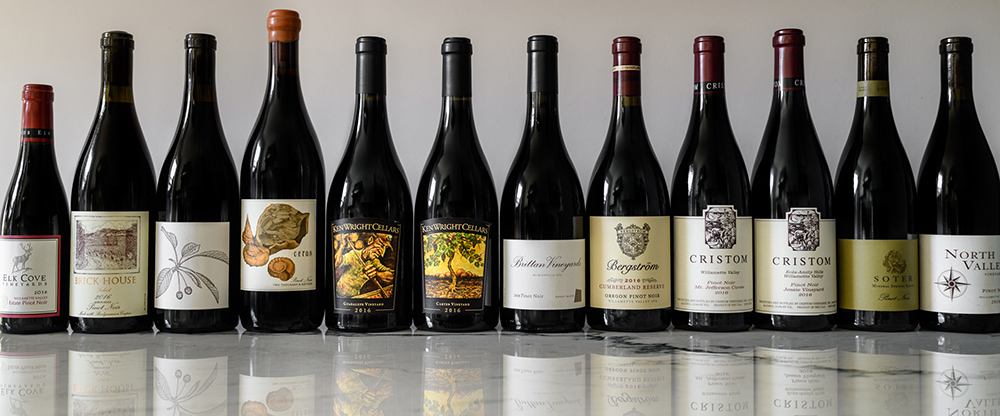
2016 proved to be a unique vintage from the get-go. Warmer winter temperatures led to a very early bud-break (about two to four weeks earlier than usual), and thus – to the earliest harvest as well. I was in Oregon that summer, and I recall the heat wave in August, with temperatures in Portland reaching 100 F. However, as winemaker Kelley Fox points out – this was not an especially hot vintage throughout. The more moderate September and October lead to clean, ripe but not overripe fruit. The early bud break also lead to smaller berries and bunches, as the spring weather was variable. Thus, unlike in 2014, this was not a record year in terms of quantity; instead, the smaller, denser crop shows excellent potential, with alcohol levels quite moderate in most of the wines and the acidity bright and fresh. From the wines I have tasted for this article, I can surmise that the aging potential in these wines is very high. Virtually every wine improved significantly over the evening and more so as the week progressed. My plan was to open the wines initially with a small group (on three separate evenings), and then to continue following the wines for a week. I would divide the wines into three major categories. Those wines that seem to need more time, those that are meant to be drunk young and those that are excellent now even though they show further potential down the road. Brick House, North Valley and especially Big Table Farm showed beautifully already, clearly begging to be opened. I found all three of the Flaneur wines, Bergström and Soter to be rather backward and closed at this point, in need of more time. My favorite wines straddled the line – Kelley Fox’s Maresh and Cristom Jessie Vineyard needed a few hours to open up but after that, it was hard to stay away, even when it was obvious that the wines have tremendous upside.
Tasting notes and details:
2016 Kelley Fox Wines Pinot Noir Maresh Vineyard (Dundee Hills AVA): The historic Maresh Vineyard in Dundee Hills, planted in 1970, produces 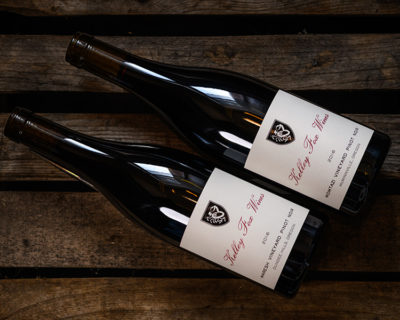 some of the most sough-after fruit in the Willamette Valley. Kelley’s approach, with 100% whole cluster, spontaneous fermentation, and no new oak, allows that fruit to speak for itself. Nose: On opening – easily the most fragrant and floral wine of the lineup. Roses, violets, a hint of tar add to the earthy cherry tones. With time, it only gets more floral, adding hints of spearmint and clove. Palate: Off the bat, this was an elegant, lithe beauty. With time it only became more so, tart red cherry, strawberry and cranberry notes complement the mineral / wet stone mid palate, leading to an earthy, savory finish that shows hints of nutmeg, pomegranate and ancho chili. Overall: this is an absolute must-try for any Pinot-lover. Kelley has captured the best of the vintage here, with the ripe cherry tones infused with earthy, spicy depth of the Maresh fruit. While I personally would hold on to this bottle for 5-7 years, with a few hours in a decanter, it is sure to please even the most discerning of palates. (94 pts.) some of the most sough-after fruit in the Willamette Valley. Kelley’s approach, with 100% whole cluster, spontaneous fermentation, and no new oak, allows that fruit to speak for itself. Nose: On opening – easily the most fragrant and floral wine of the lineup. Roses, violets, a hint of tar add to the earthy cherry tones. With time, it only gets more floral, adding hints of spearmint and clove. Palate: Off the bat, this was an elegant, lithe beauty. With time it only became more so, tart red cherry, strawberry and cranberry notes complement the mineral / wet stone mid palate, leading to an earthy, savory finish that shows hints of nutmeg, pomegranate and ancho chili. Overall: this is an absolute must-try for any Pinot-lover. Kelley has captured the best of the vintage here, with the ripe cherry tones infused with earthy, spicy depth of the Maresh fruit. While I personally would hold on to this bottle for 5-7 years, with a few hours in a decanter, it is sure to please even the most discerning of palates. (94 pts.)
2016 Cristom Pinot Noir Jessie Vineyard (Eola-Amity Hills AVA): The Jessie Vineyard, established in 1994, is one of the steepest sites in 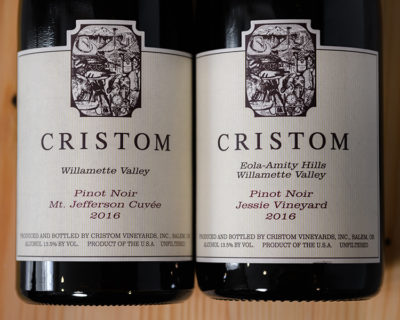 Willamette Valley. This single-vineyard wine is vinified with 100% native yeast and about 50% whole cluster (depending on vintage – 49% in 2016) and spends 18 months in French oak (62% new in 2016). Nose: On opening – with the high percentage of new oak, one would expect to see some on the nose – not here. There was a pronounced note of green herbs on the first day, likely the sign of whole-cluster approach, but it was completely gone by day three. Sweet ripe cherries, grilled meat and savory herbs dominated thereafter. Palate: On opening – sweet black cherry, quite ripe and powerful, turning redder toward the back palate, with savory herb and chewy, juicy tannin. With time the wine became leaner, but more powerful, gaining notes of iron, licorice and bitter chocolate in mid palate. Long finish with a grip. Overall: this wine needs time, it showed the most upside over the week, gaining balance and precision. I can see it developing the earthier tones of pinot and easily aging a decade or more. (93 pts.) Willamette Valley. This single-vineyard wine is vinified with 100% native yeast and about 50% whole cluster (depending on vintage – 49% in 2016) and spends 18 months in French oak (62% new in 2016). Nose: On opening – with the high percentage of new oak, one would expect to see some on the nose – not here. There was a pronounced note of green herbs on the first day, likely the sign of whole-cluster approach, but it was completely gone by day three. Sweet ripe cherries, grilled meat and savory herbs dominated thereafter. Palate: On opening – sweet black cherry, quite ripe and powerful, turning redder toward the back palate, with savory herb and chewy, juicy tannin. With time the wine became leaner, but more powerful, gaining notes of iron, licorice and bitter chocolate in mid palate. Long finish with a grip. Overall: this wine needs time, it showed the most upside over the week, gaining balance and precision. I can see it developing the earthier tones of pinot and easily aging a decade or more. (93 pts.)
2016 Kelley Fox Wines Pinot Noir Momtazi Vineyard (McMinnville AVA): Momtazi Vineyard is a Demeter-certified (in 2005) biodynamic vineyard in the McMinnville Foothills A.V. A. It used to be a wheat farm, though abandoned. It was planted at the turn of the century and 260 acres are currently under vine. Kelley uses only native yeasts, no new oak and 100% whole cluster fermentation. Nose: Once again – Kelley’s wines offer the complex floral notes, with roses and violets playing against the more exotic notes of bergamot, chamomile and milk chocolate. Palate: On opening – Ripe cherry, juicy and powerful, with deeper hints of tobacco and savory herb. With time, the cherry turns toward the tarter, earthier side, with more mouthwatering acidity and mineral notes. The wine shows more power than the Maresh, darker notes, leading to a spicy, tangy finish. Overall: This, even more than the Maresh, will reward patience. It is delicious now, I know… but hide it from yourself. And it will blossom. Once the earthy tones come to the fore, to challenge the black cherry outright, I believe it will stand along some of the best Pinots in Oregon, if not the world. (93 pts.)
2016 Antica Terra Pinot Noir Ceras (Willamette Valley AVA): My introduction to Maggie Harrison was through her “Lillian” Syrah. It was powerful, 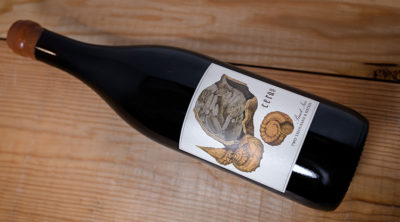 unabashedly so, but with depth and complexity to match. I was quite excited to try the Ceras. Antica Terra is an 11-acre vineyard in the Eola-Amity Hills. Maggie crafts several unique wines from the vineyard, including two complementary Pinot expressions – the luxurious Botanica and the structured Ceras. Nose: On opening – ripe and powerful, dark blue and black fruit dominating. However, with some time, minerality came to the fore – elegant, with notes of rose and perfume of wild flowers. Palate also went through a paradigm shift – what was a lush, plush powerhouse on day one, became a dryer, more elegant black cherry with time. Tart blueberry and blackberry, mineral tones, with savory herb leading toward a long, tangy finish. Overall: the wine is already impressive, quite unique in its approach, one that keeps the drinker guessing. If you are in search of the unusual, a wine to puzzle and please the senses – Ceras may be the best answer. (93 pts.) unabashedly so, but with depth and complexity to match. I was quite excited to try the Ceras. Antica Terra is an 11-acre vineyard in the Eola-Amity Hills. Maggie crafts several unique wines from the vineyard, including two complementary Pinot expressions – the luxurious Botanica and the structured Ceras. Nose: On opening – ripe and powerful, dark blue and black fruit dominating. However, with some time, minerality came to the fore – elegant, with notes of rose and perfume of wild flowers. Palate also went through a paradigm shift – what was a lush, plush powerhouse on day one, became a dryer, more elegant black cherry with time. Tart blueberry and blackberry, mineral tones, with savory herb leading toward a long, tangy finish. Overall: the wine is already impressive, quite unique in its approach, one that keeps the drinker guessing. If you are in search of the unusual, a wine to puzzle and please the senses – Ceras may be the best answer. (93 pts.)
2016 Cristom Pinot Noir Mt. Jefferson Cuvée (Willamette Valley AVA): A blend of both Estate (69% in 2016) and purchased fruit, this wine is pressed with 48% whole clusters and goes through 100% native yeast fermentation. It then spends 11 months in French oak (23% new) before blending. Nose: On opening – a hint of herbs that quickly dissipated, candied raspberry, a bit of dusty, earthy cherry. With time – the herb note on the nose is gone, sweet perfume, roses, sour cherry and earthy tones remain. Palate: On opening – light, brisk with tart and sour cherry, bright acidity, savory herb and a chewy, masculine structure. With time – the tart cherry begins to show its spicier side, as the wine becomes more elegant, still quite light but with a deep, complex mineral tone. Long tart finish with cherries and pepper. Overall: this wine consistently over-performs for the price. I would give it two to five years to really come together, but the elegance and balance that the wine shows are already impressive, as it masterfully tempers the ripeness of the vintage. (92 pts.)
2016 Brittan Vineyards Pinot Noir Basalt Block (McMinnville AVA): Robert and Ellen Brittan purchased the 128-acre property that was to become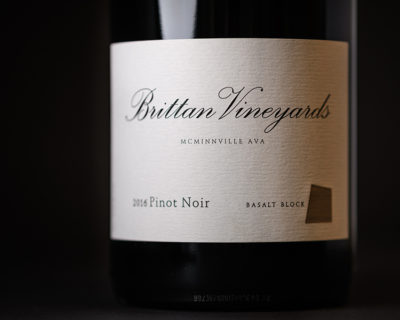 Brittan Vineyards, in 2004. At that point, it was a dream, a place of their own. While the land had 18 acres under vine already, much of that had to be replanted. Robert, of course, had significant history in the vineyards – having spent the previous 16 years at Stags’ Leap Winery. Now, with a decade plus under its belt, Brittan Vineyards is producing vivid, powerful Pinot Noirs, that speak to the volcanic soils of their vineyard. Nose: The wine opened with an unusual combination of mint, cedar and deep purple plum and blackberry. However, with time, the richer notes turned to black cherry and sweet plum, with the oak receding and juicier and spicier notes coming to the fore. Palate: On opening, dark black fruit on the front palate lead to dried cherry, dried cranberry notes toward the back. Toast, dried herb and sweet plums remind one of Amarone; but the brightness of acidity is clear even at the start. With time, the wine gained balance and polish, while retaining its power. Lush black fruit, polished and luxurious – this is an “armchair” wine. Or even better – one to recline with in the Greco-Roman fashion. Overall: this is a bruiser of a wine, but with precision and redder fruit toward the back of the palate, refreshing the drinker at every sip. Mouth-filling, with silky tannin and juicy, tart fruit – it is not for the meek. However, those who are willing to give this wine its due – and some time in the cellar – will find a powerful, but well built, boxer of a wine. (92 pts.) Brittan Vineyards, in 2004. At that point, it was a dream, a place of their own. While the land had 18 acres under vine already, much of that had to be replanted. Robert, of course, had significant history in the vineyards – having spent the previous 16 years at Stags’ Leap Winery. Now, with a decade plus under its belt, Brittan Vineyards is producing vivid, powerful Pinot Noirs, that speak to the volcanic soils of their vineyard. Nose: The wine opened with an unusual combination of mint, cedar and deep purple plum and blackberry. However, with time, the richer notes turned to black cherry and sweet plum, with the oak receding and juicier and spicier notes coming to the fore. Palate: On opening, dark black fruit on the front palate lead to dried cherry, dried cranberry notes toward the back. Toast, dried herb and sweet plums remind one of Amarone; but the brightness of acidity is clear even at the start. With time, the wine gained balance and polish, while retaining its power. Lush black fruit, polished and luxurious – this is an “armchair” wine. Or even better – one to recline with in the Greco-Roman fashion. Overall: this is a bruiser of a wine, but with precision and redder fruit toward the back of the palate, refreshing the drinker at every sip. Mouth-filling, with silky tannin and juicy, tart fruit – it is not for the meek. However, those who are willing to give this wine its due – and some time in the cellar – will find a powerful, but well built, boxer of a wine. (92 pts.)
2016 Ken Wright Pinot Noir Guadalupe Vineyard (Willamette Valley AVA): The Guadalupe Vineyard, planted in 1989, straddles the line between 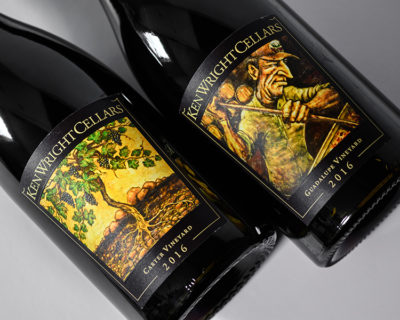 Dundee Hills and Yamhill-Carlton AVAs, though officially in the former, its soils are more akin to the latter (and thus – Ken Wright labels it under the more general Willamette Valley AVA). Like all single vineyard wines at KW, these are separated by clone, hand sorted, pressed and aged separately for about a year in French oak. Palate: On opening – this wine lived up to its “spice focused” characteristics. Red cherry and strawberry notes are underpinned with a spicy, minty note. With time, the cherry on the nose begins to lean in the maraschino direction, with a leathery, earthy note gaining prominence. Palate: On opening the wine showed a lighter body, with tart cherry, tobacco, herb and a rustic, chewy texture. With time, it gained a bit in weight, still showing quite light but with a riper, blacker cherry and smoky plum. Brash but long finish added freshness with notes of tart cherry. Overall: The wine is light on its feet, bright, with a lovely freshness toward the finish. However, there are still hints of oak on the palate that need some time to integrate further. I think this wine shows potential and once the more rustic notes integrate with the spicy sweet cherry fruit, it will be a quite delicious expression of the vineyard. (91 pts.) Dundee Hills and Yamhill-Carlton AVAs, though officially in the former, its soils are more akin to the latter (and thus – Ken Wright labels it under the more general Willamette Valley AVA). Like all single vineyard wines at KW, these are separated by clone, hand sorted, pressed and aged separately for about a year in French oak. Palate: On opening – this wine lived up to its “spice focused” characteristics. Red cherry and strawberry notes are underpinned with a spicy, minty note. With time, the cherry on the nose begins to lean in the maraschino direction, with a leathery, earthy note gaining prominence. Palate: On opening the wine showed a lighter body, with tart cherry, tobacco, herb and a rustic, chewy texture. With time, it gained a bit in weight, still showing quite light but with a riper, blacker cherry and smoky plum. Brash but long finish added freshness with notes of tart cherry. Overall: The wine is light on its feet, bright, with a lovely freshness toward the finish. However, there are still hints of oak on the palate that need some time to integrate further. I think this wine shows potential and once the more rustic notes integrate with the spicy sweet cherry fruit, it will be a quite delicious expression of the vineyard. (91 pts.)
2016 Flaneur Pinot Noir La Belle Promenade (Chehalem Mountains AVA): Flaneur is a young winery, 2013 was their inaugural vintage. However, 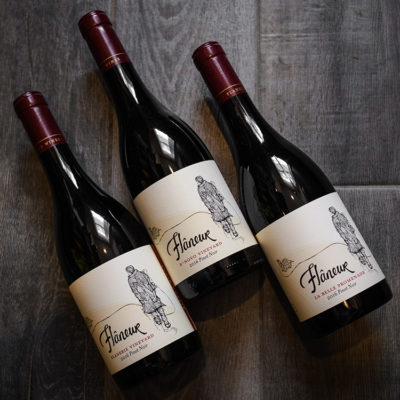 with the purchase of 8-acre Flanerie vineyard and the 33 acres in Chehalem Mountains that became “La Belle Promenade” they are on their way. The 26 acres of Pinot here was only planted in 2014, but the resulting wine is already impressive. The grapes were vinified with 100% native yeast fermentation, 22% whole clusters and a 12 months nap in French oak (38% new). Nose: Floral, elegant, with red fruit and a hint of oak. Palate: Ripe red and black cherry, leaning toward the brighter, redder tones in the mid and back palate, hint of herbs, cedar, and spice. The wine is tightly structured and the ripe core needs time to unwind. Overall: I was charmed by the bright floral notes and red fruit of this wine. It clearly needs a few years to unfurl, but there is absolute potential here already, and with time – the vineyard should show even more promise. (91 pts.) with the purchase of 8-acre Flanerie vineyard and the 33 acres in Chehalem Mountains that became “La Belle Promenade” they are on their way. The 26 acres of Pinot here was only planted in 2014, but the resulting wine is already impressive. The grapes were vinified with 100% native yeast fermentation, 22% whole clusters and a 12 months nap in French oak (38% new). Nose: Floral, elegant, with red fruit and a hint of oak. Palate: Ripe red and black cherry, leaning toward the brighter, redder tones in the mid and back palate, hint of herbs, cedar, and spice. The wine is tightly structured and the ripe core needs time to unwind. Overall: I was charmed by the bright floral notes and red fruit of this wine. It clearly needs a few years to unfurl, but there is absolute potential here already, and with time – the vineyard should show even more promise. (91 pts.)
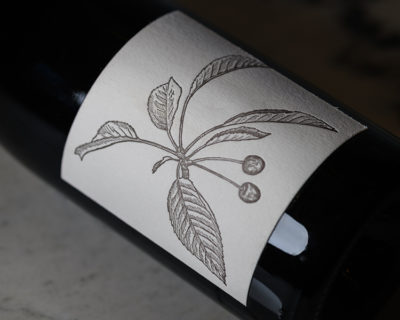 2016 Big Table Farm Pinot Noir Wirtz Vineyard (Willamette Valley AVA): This was the last vintage for the old Wirtz Vineyard – 45-year-old Coury clone vines. Only 208 cases made, bottled unfined and unfiltered. Nose: On opening – sweet cherry, elderberry. With time, ripe, rich fruit, hints of cola, sweet cedar. Palate: On opening – this is a luxurious, ripe wine. Richer in style, with velvet, plush ripe cherry, sweet tobacco, mint and pine notes. Over time the wine gains in power, adding sweet, warm spices to the mix. Savory, smoky toward the finish, it is easy to forget that the glass is quickly in need of a refill. Overall: this was the absolute “guilty” pleasure of the group. Lush, full of sweet fruit and savory, grilled meat notes. I would be glad to open this in any company – especially paired with a juicy pork chop or duck confit. (91 pts.) 2016 Big Table Farm Pinot Noir Wirtz Vineyard (Willamette Valley AVA): This was the last vintage for the old Wirtz Vineyard – 45-year-old Coury clone vines. Only 208 cases made, bottled unfined and unfiltered. Nose: On opening – sweet cherry, elderberry. With time, ripe, rich fruit, hints of cola, sweet cedar. Palate: On opening – this is a luxurious, ripe wine. Richer in style, with velvet, plush ripe cherry, sweet tobacco, mint and pine notes. Over time the wine gains in power, adding sweet, warm spices to the mix. Savory, smoky toward the finish, it is easy to forget that the glass is quickly in need of a refill. Overall: this was the absolute “guilty” pleasure of the group. Lush, full of sweet fruit and savory, grilled meat notes. I would be glad to open this in any company – especially paired with a juicy pork chop or duck confit. (91 pts.)
2016 Ken Wright Pinot Noir Carter Vineyard (Eola-Amity Hills AVA): The Carter Vineyard, planted in 1983, is a volcanic soil slope, which gives ripe, powerful and fruit forward wines. Like all single vineyard wines at KW, these are separated by clone, hand sorted, pressed and aged separately for about a year in French oak. Nose: plums, very ripe blackberry and blueberry. Hints of cedar and alcohol are present at the start but they dissipate with air. Palate: This is a big wine, ripe plum, black cherry, dark, full-bodied and luxurious. The mid palate is velvety, plush and full of sweet ripe fruit. Toward the back there are hints of orange liqueur and brandied cherries but this is balanced with a powerful structure and acidity. Overall: Like the Guadalupe, this wine clearly needs more time to come into its own. While on the lusher and wilder side right now, the impressive structure suggests a long life and excellent potential. (91 pts.)
2016 Soter Pinot Noir Mineral Springs Ranch (Yamhill-Carlton AVA): The Mineral Springs Ranch is much more than a vineyard – while its 240 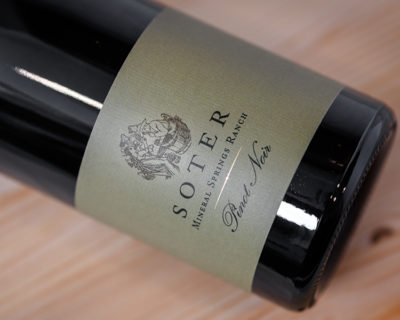 acres contain 40 acres of vines, the rest is used for orchards, vegetable and grain growing, oak groves and meadows. The MSR Pinot Noir is vinified with 30% whole cluster and receives an extended maceration of 30 days. It spends twelve months in French oak barrels (40% new). Nose: On opening – black cherry, blackberry and plum, with a hint of cedar. With time it showed more earthy tones, along with cola and black cherry. Palate: On opening – very backward, showing ripe fruit and brawny tannin. With time, black cherry, plum and quite powerful. Chewy texture, still quite backward and unyielding. The wine shows good structure, with spicier, more mineral tones toward the back palate. Alcohol is present here, needing more time to integrate. Overall: this was one of the more backward wines in the group, needing patience and a good nap in the bottle. It is on the riper, heftier side of the spectrum, but without the lushness – kept tight by its brisk acidity. I would give it at least five years of aging. (90 pts.) acres contain 40 acres of vines, the rest is used for orchards, vegetable and grain growing, oak groves and meadows. The MSR Pinot Noir is vinified with 30% whole cluster and receives an extended maceration of 30 days. It spends twelve months in French oak barrels (40% new). Nose: On opening – black cherry, blackberry and plum, with a hint of cedar. With time it showed more earthy tones, along with cola and black cherry. Palate: On opening – very backward, showing ripe fruit and brawny tannin. With time, black cherry, plum and quite powerful. Chewy texture, still quite backward and unyielding. The wine shows good structure, with spicier, more mineral tones toward the back palate. Alcohol is present here, needing more time to integrate. Overall: this was one of the more backward wines in the group, needing patience and a good nap in the bottle. It is on the riper, heftier side of the spectrum, but without the lushness – kept tight by its brisk acidity. I would give it at least five years of aging. (90 pts.)
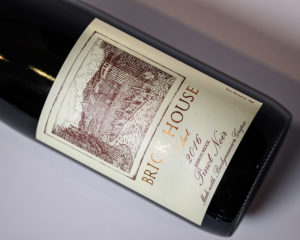 2016 Brick House Pinot Noir Select Ribbon Ridge (Ribbon Ridge AVA): The “Select” Pinot Noir represents an estate wine – a barrel selection from all the estate blocks that represent the property while staying true to the easy-going nature of the blend. This small farm (40 acres total with 30 under vine) was planted in 1990 and is both organic and bio-dynamic certified. Nose: On opening – ripe, sweet cherry. With time, it showed sweet raspberry notes in addition to the cherry, and hints of cinnamon and cola. Palate: On opening – ripe sweet fruit, candied cherries, and cola. With time, it shows sweet raspberry, red plum and an earthy hint toward the back palate reminiscent of Kriek. Finish is moderate, with refreshing acidity and a hint of spice. Overall: This was a delicious, fruit forward wine that begs to be opened today… now even. The wine would go nicely with a meal, the bright acidity on the finish keeping it fresh, but could absolutely be enjoyed on its own as well. While it showed potential to age, who could keep their hands off this gem now? (90 pts.) 2016 Brick House Pinot Noir Select Ribbon Ridge (Ribbon Ridge AVA): The “Select” Pinot Noir represents an estate wine – a barrel selection from all the estate blocks that represent the property while staying true to the easy-going nature of the blend. This small farm (40 acres total with 30 under vine) was planted in 1990 and is both organic and bio-dynamic certified. Nose: On opening – ripe, sweet cherry. With time, it showed sweet raspberry notes in addition to the cherry, and hints of cinnamon and cola. Palate: On opening – ripe sweet fruit, candied cherries, and cola. With time, it shows sweet raspberry, red plum and an earthy hint toward the back palate reminiscent of Kriek. Finish is moderate, with refreshing acidity and a hint of spice. Overall: This was a delicious, fruit forward wine that begs to be opened today… now even. The wine would go nicely with a meal, the bright acidity on the finish keeping it fresh, but could absolutely be enjoyed on its own as well. While it showed potential to age, who could keep their hands off this gem now? (90 pts.)
2016 Flaneur Pinot Noir Flanerie (Ribbon Ridge AVA): The Flannerie Vineyard (Ribbon Ridge AVA) was planted on eight acres in 2003, and Flaneur has used this fruit since their inaugural vintage – 2013. The 2016 is vinified with 20% whole cluster and spends twelve months in French oak (37% new). Nose: This is a big wine, and that is obvious off the bat. Ripe plums, coffee, cedar notes that mellow with time, revealing meatier, savory herb aromas. Palate: ripe, carrying its 14.8% alcohol with aplomb, black cherry, ripe sweet plum, with tobacco leaf and herbal notes toward the back. Savory and serious, it keeps the balance with a dose of ripe acidity. Overall: For such a ripe wine, it has impeccable balance. With time, the wine became brighter, losing some of the “fat” and showing a more angular, earthy side. This Pinot can stand up to even the richest cut of meat. Give it some time in the decanter though. (90 pts.)
2016 North Valley Vineyards Pinot Noir (Willamette Valley AVA): “North Valley”, a Soter Vineyards project, speaks to the beauty of the fruit grown in  Northern Willamette Valley. This wine, sourced from multiple vineyards in the area, is vinified with 20% whole clusters and then aged in barrel (10% new oak). Nose: On opening – ripe, powerful fruit, plum and black cherry. With time, it gained a bit more restraint, developing lighter, more floral tones as well as redder fruit notes. Palate: On opening – juicy, tart cherry, sweet herbs, plums, pepper and a rustic touch toward the back palate. With time, it showed cooler fruit notes, though staying with the velvety plum and cherry, more herb and spice toward the back, leading to a medium finish. Overall: this Pinot showed well almost immediately, after a brief time in the glass, and was absolutely delicious with food. Perhaps a touch softer than some of the others, the plush note lends itself to a more immediate pleasure. (90 pts.) Northern Willamette Valley. This wine, sourced from multiple vineyards in the area, is vinified with 20% whole clusters and then aged in barrel (10% new oak). Nose: On opening – ripe, powerful fruit, plum and black cherry. With time, it gained a bit more restraint, developing lighter, more floral tones as well as redder fruit notes. Palate: On opening – juicy, tart cherry, sweet herbs, plums, pepper and a rustic touch toward the back palate. With time, it showed cooler fruit notes, though staying with the velvety plum and cherry, more herb and spice toward the back, leading to a medium finish. Overall: this Pinot showed well almost immediately, after a brief time in the glass, and was absolutely delicious with food. Perhaps a touch softer than some of the others, the plush note lends itself to a more immediate pleasure. (90 pts.)
2016 Flaneur Pinot Noir X-Novo Vineyard (Eola-Amity Hills AVA): The X-Novo Vineyard, planted in 2010 is only 3.3 acres in total, of which 1.3 is Pinot Noir. Planted and owned by Craig Williams, known for his work in Napa Valley, this volcanic soil and basalt rock vineyard is planted with 11 different Pinot Noir clones. The wine (all 100 cases of it) is vinified destemmed, and spends 12 months in French oak (45% new). Nose: ripe, concentrated blackberry, sweet cedar, vanilla and macerated cherry. Palate: Rich, chocolate covered cherry, dried plums, sweet blueberry. This is undoubtedly a big wine – but its 14.9 % alcohol is balanced by a bright acidity. Overall: The biggest surprise came when I tasted this wine a week after opening. Not that it miraculously became earthy or red fruited, not at all. Nevertheless, the balance continued to improve, showing more of the refreshing undertones, the oak integrating well and the lush fruit gaining structure. This one had me fooled – perhaps if one were to ignore the original draw of sappy, juicy fruit – there is more hidden here for those with patience. (89 pts.)
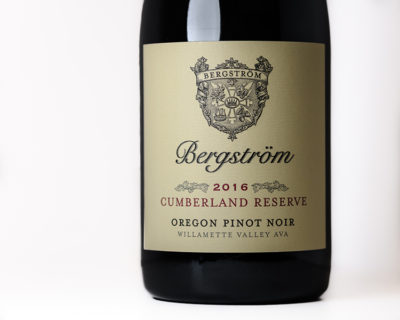 2016 Bergström Pinot Noir Cumberland Reserve (Willamette Valley AVA): The Cumberland Reserve is a blend of biodynamic fruit from estate vineyards throughout the Willamette Valley. It spends twelve months in French oak barrels (10% new) and is then blended. Nose: Rather reticent upon opening, the wine really needed time to begin showing itself. Ripe cherry, earthy notes mix with pine and dried herbs. Palate: This wine clearly needed time, opening up only on the second day, and even then barely. Tart cherry, crunchy in the mid palate, with power but very dry, flinty and earthy tones. Overall: It needs time. I would not open it now, but rather hide it away for 3-5 years and let the wine come together. The fruit and the structure are clearly present, but at this point, the wine is unwilling to cooperate. (89 pts.) 2016 Bergström Pinot Noir Cumberland Reserve (Willamette Valley AVA): The Cumberland Reserve is a blend of biodynamic fruit from estate vineyards throughout the Willamette Valley. It spends twelve months in French oak barrels (10% new) and is then blended. Nose: Rather reticent upon opening, the wine really needed time to begin showing itself. Ripe cherry, earthy notes mix with pine and dried herbs. Palate: This wine clearly needed time, opening up only on the second day, and even then barely. Tart cherry, crunchy in the mid palate, with power but very dry, flinty and earthy tones. Overall: It needs time. I would not open it now, but rather hide it away for 3-5 years and let the wine come together. The fruit and the structure are clearly present, but at this point, the wine is unwilling to cooperate. (89 pts.)
2016 Elk Cove Vineyards Pinot Noir Estate Willamette Valley (Willamette Valley AVA): A blend of six estate vineyard sites (The Winery Estate, 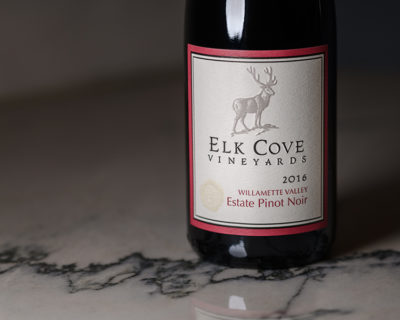 Mount Richmond, Five Mountain, Clay Court, Goodrich and Windhill), fermented separately, the wine spends 10 months in barrel (French oak, 20% new) and is then blended. Nose: On opening – blackberry, ripe black cherry, hint of sweet cedar, cinnamon. With time, the cedar note recedes, as does the sweetness of the fruit – leaning more toward bright though still black cherry and blueberry. Palate: On opening – ripe, sweet cherry and a brash, rustic touch of tannin and spice. With time, the wine opens up, developing sweeter notes, a hint more lush and polished, with notes of brambles, ripe blackberry and pepper. Medium length finish shows a refreshing edge, with redder fruit and hints of spice. Overall: while surely on the darker side of the fruit spectrum, this wine is an intriguing introduction into Willamette Valley Pinot Noir. It showed some improvement with extra time, and I would not hesitate to put it away for several years as it would develop a bit more balance, at the same time – this was squarely in the group of wines that showed well from the get go. (89 pts.) Mount Richmond, Five Mountain, Clay Court, Goodrich and Windhill), fermented separately, the wine spends 10 months in barrel (French oak, 20% new) and is then blended. Nose: On opening – blackberry, ripe black cherry, hint of sweet cedar, cinnamon. With time, the cedar note recedes, as does the sweetness of the fruit – leaning more toward bright though still black cherry and blueberry. Palate: On opening – ripe, sweet cherry and a brash, rustic touch of tannin and spice. With time, the wine opens up, developing sweeter notes, a hint more lush and polished, with notes of brambles, ripe blackberry and pepper. Medium length finish shows a refreshing edge, with redder fruit and hints of spice. Overall: while surely on the darker side of the fruit spectrum, this wine is an intriguing introduction into Willamette Valley Pinot Noir. It showed some improvement with extra time, and I would not hesitate to put it away for several years as it would develop a bit more balance, at the same time – this was squarely in the group of wines that showed well from the get go. (89 pts.)
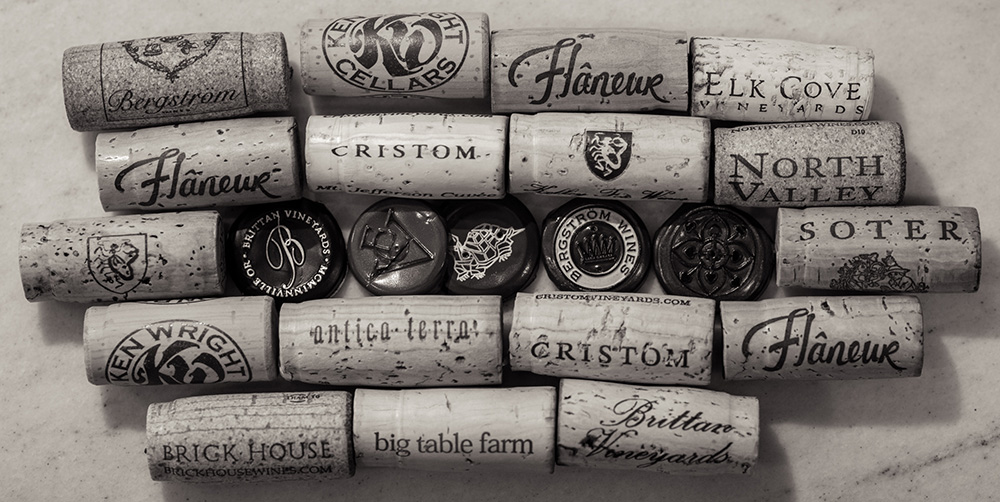
Credits & Resources
Article, Photos and Notes by Mikhail Lipyanskiy
Thank you to Morrell Wines and Eric Guido for the opportunity to guest-write this article.
Special thanks to Willamette Valley Wineries Association and Jarvis Communication for the information and inspiration.
Thank you to all the wineries (Kelley Fox , Flaneur, Brittan) for the wines and all the additional information provided.
And to the distributors (Skurnik, Massanois and Wilson Daniels) for your help in acquiring the wines.
And to the Oregon Wine Board (www.oregonwine.org) for the incredibly informative wine course.
View the Oregon Pinot Noir Selection At: Morrell Wine |

.jpg)

 In 1970, there were less than 100 acres of Vitis vinifera in Oregon, and only five wineries. The pioneers of the region came to the Valley with a dream, but without much money. This lead to an early spirit of collaboration. Diana Lett, of Eyrie Vineyards, recalls the early days of Oregon wine in the “Oregon Wine: Grapes of Place” documentary; “the one thing that all of our early wine community had in common was poverty. The banks would not loan us any money … because we were young and because we were doing something that hadn’t been done before and there was no assurance we would be able to pull it off.” The early wineries worked together to ensure that no virus-ridden vines were brought in. In 1973, Oregon Senate Bill 100 was passed, preserving hillsides of the valley from urban development and ensuring the future of Oregon wine. In 1977, the winemakers worked together to pass strict labeling regulations, requiring 100% of the grapes to be grown in Oregon and 95% of grapes to be grown in the AVA (American Viticultural Area) named on the label. There was much to learn, but the comradery of the pioneers led to the quick growth of the industry. And, only a decade later, came the shocking tasting of 1979.
In 1970, there were less than 100 acres of Vitis vinifera in Oregon, and only five wineries. The pioneers of the region came to the Valley with a dream, but without much money. This lead to an early spirit of collaboration. Diana Lett, of Eyrie Vineyards, recalls the early days of Oregon wine in the “Oregon Wine: Grapes of Place” documentary; “the one thing that all of our early wine community had in common was poverty. The banks would not loan us any money … because we were young and because we were doing something that hadn’t been done before and there was no assurance we would be able to pull it off.” The early wineries worked together to ensure that no virus-ridden vines were brought in. In 1973, Oregon Senate Bill 100 was passed, preserving hillsides of the valley from urban development and ensuring the future of Oregon wine. In 1977, the winemakers worked together to pass strict labeling regulations, requiring 100% of the grapes to be grown in Oregon and 95% of grapes to be grown in the AVA (American Viticultural Area) named on the label. There was much to learn, but the comradery of the pioneers led to the quick growth of the industry. And, only a decade later, came the shocking tasting of 1979. impress critics and drinkers alike, the valley began to attract outside investment, most prominently – the Drouhin family of Burgundy. By the early 90s, Willamette Valley was on its way to the top, and, through its influence, continues to raise the banner of both quality and sustainability. Although Oregon accounts for only 1% of all wine made in the USA, it garners 20% of 90+ scores for domestic wines from the Wine Spectator. Dedication to sustainable approaches are equally impressive. Forty-seven percent of all Oregon vineyards are certified sustainable, and out of only 14 wineries from around the world that are certified as B Corp businesses – five are in Oregon.
impress critics and drinkers alike, the valley began to attract outside investment, most prominently – the Drouhin family of Burgundy. By the early 90s, Willamette Valley was on its way to the top, and, through its influence, continues to raise the banner of both quality and sustainability. Although Oregon accounts for only 1% of all wine made in the USA, it garners 20% of 90+ scores for domestic wines from the Wine Spectator. Dedication to sustainable approaches are equally impressive. Forty-seven percent of all Oregon vineyards are certified sustainable, and out of only 14 wineries from around the world that are certified as B Corp businesses – five are in Oregon. Within the larger Willamette Valley AVA, established in 1983, seven smaller growing areas have achieved their own AVA status. Combined, they represent the majority of the northern Willamette Valley and contain sixty percent of the current acreage under vine. Six (Chehalem Mountains, Dundee Hills, Yamhill-Carlton, Eola-Amity Hills, Ribbon Ridge and McMinnville) were established in 2005-2006, and one, the Van Duzer Corridor AVA, was added just this year. The seven AVAs are differentiated by their geography and climate, and thus provide an additional insight into the wines grown there. While I would not suggest that the AVA dictates a style, knowing the climate is beneficial to understanding more about the fruit, and thus the wine itself. There are three major soil types present in the Valley: the Marine Sedimentary soils, created millions of years ago when the whole region was submerged under the Pacific Ocean; the red Volcanic Basalt soils, from the volcanic activity that resulted in lava flows throughout northern Oregon; and, finally, the windblown “loess” soils, deposited in the Valley during the last ice age.
Within the larger Willamette Valley AVA, established in 1983, seven smaller growing areas have achieved their own AVA status. Combined, they represent the majority of the northern Willamette Valley and contain sixty percent of the current acreage under vine. Six (Chehalem Mountains, Dundee Hills, Yamhill-Carlton, Eola-Amity Hills, Ribbon Ridge and McMinnville) were established in 2005-2006, and one, the Van Duzer Corridor AVA, was added just this year. The seven AVAs are differentiated by their geography and climate, and thus provide an additional insight into the wines grown there. While I would not suggest that the AVA dictates a style, knowing the climate is beneficial to understanding more about the fruit, and thus the wine itself. There are three major soil types present in the Valley: the Marine Sedimentary soils, created millions of years ago when the whole region was submerged under the Pacific Ocean; the red Volcanic Basalt soils, from the volcanic activity that resulted in lava flows throughout northern Oregon; and, finally, the windblown “loess” soils, deposited in the Valley during the last ice age. strong winds and the predominant soil here is the windblown loess. The Yamhill-Carlton AVA is on the Northwestern side of the Valley, protected on the west by the Coastal Range, and is comprised mainly of marine sedimentary soils. The warmer weather and the well-drained soils result in riper, richer wines. Ribbon Ridge AVA is contained within the Chehalem Mountains AVA but it is composed entirely of Willakenzie (marine sedimentary) soil. The lack of water and the lower elevation of the Ridge results in perfumed, riper wines. The Dundee Hills AVA is home to the famous red basalt soils called Jory, which provide excellent drainage and a complex mineral structure. Well protected from both sides by the Coastal range on the west and the Chehalem Mountains to the east, the hills offer an ideal climate for Pinot Noir. Eola-Amity Hills contains much of the same volcanic soil, but the cooler temperature, with the ocean winds coming through the Van Duzer Corridor, dramatically alter the climate. The cool afternoon winds lead to smaller berries and higher acidity in the vines, which leads to wines with greater tannic structure and zestier, brighter mid-palates. The extremely thin topsoil of the McMinnville AVA forces the vines to struggle, bringing out darker, spicier notes in the wines. Van Duzer Corridor, the youngest AVA, is known for its unique wind-tunnel effect. The winds from the coast begin as early as 2:00 PM and, while lowering average temperatures, dry the canopy relieving fungal pressure. The marine sediment soils drain easily and the winds thicken the skins of the grapes, leading to darker, earthier wines.
strong winds and the predominant soil here is the windblown loess. The Yamhill-Carlton AVA is on the Northwestern side of the Valley, protected on the west by the Coastal Range, and is comprised mainly of marine sedimentary soils. The warmer weather and the well-drained soils result in riper, richer wines. Ribbon Ridge AVA is contained within the Chehalem Mountains AVA but it is composed entirely of Willakenzie (marine sedimentary) soil. The lack of water and the lower elevation of the Ridge results in perfumed, riper wines. The Dundee Hills AVA is home to the famous red basalt soils called Jory, which provide excellent drainage and a complex mineral structure. Well protected from both sides by the Coastal range on the west and the Chehalem Mountains to the east, the hills offer an ideal climate for Pinot Noir. Eola-Amity Hills contains much of the same volcanic soil, but the cooler temperature, with the ocean winds coming through the Van Duzer Corridor, dramatically alter the climate. The cool afternoon winds lead to smaller berries and higher acidity in the vines, which leads to wines with greater tannic structure and zestier, brighter mid-palates. The extremely thin topsoil of the McMinnville AVA forces the vines to struggle, bringing out darker, spicier notes in the wines. Van Duzer Corridor, the youngest AVA, is known for its unique wind-tunnel effect. The winds from the coast begin as early as 2:00 PM and, while lowering average temperatures, dry the canopy relieving fungal pressure. The marine sediment soils drain easily and the winds thicken the skins of the grapes, leading to darker, earthier wines.
 some of the most sough-after fruit in the Willamette Valley. Kelley’s approach, with 100% whole cluster, spontaneous fermentation, and no new oak, allows that fruit to speak for itself. Nose: On opening – easily the most fragrant and floral wine of the lineup. Roses, violets, a hint of tar add to the earthy cherry tones. With time, it only gets more floral, adding hints of spearmint and clove. Palate: Off the bat, this was an elegant, lithe beauty. With time it only became more so, tart red cherry, strawberry and cranberry notes complement the mineral / wet stone mid palate, leading to an earthy, savory finish that shows hints of nutmeg, pomegranate and ancho chili. Overall: this is an absolute must-try for any Pinot-lover. Kelley has captured the best of the vintage here, with the ripe cherry tones infused with earthy, spicy depth of the Maresh fruit. While I personally would hold on to this bottle for 5-7 years, with a few hours in a decanter, it is sure to please even the most discerning of palates. (94 pts.)
some of the most sough-after fruit in the Willamette Valley. Kelley’s approach, with 100% whole cluster, spontaneous fermentation, and no new oak, allows that fruit to speak for itself. Nose: On opening – easily the most fragrant and floral wine of the lineup. Roses, violets, a hint of tar add to the earthy cherry tones. With time, it only gets more floral, adding hints of spearmint and clove. Palate: Off the bat, this was an elegant, lithe beauty. With time it only became more so, tart red cherry, strawberry and cranberry notes complement the mineral / wet stone mid palate, leading to an earthy, savory finish that shows hints of nutmeg, pomegranate and ancho chili. Overall: this is an absolute must-try for any Pinot-lover. Kelley has captured the best of the vintage here, with the ripe cherry tones infused with earthy, spicy depth of the Maresh fruit. While I personally would hold on to this bottle for 5-7 years, with a few hours in a decanter, it is sure to please even the most discerning of palates. (94 pts.) Willamette Valley. This single-vineyard wine is vinified with 100% native yeast and about 50% whole cluster (depending on vintage – 49% in 2016) and spends 18 months in French oak (62% new in 2016). Nose: On opening – with the high percentage of new oak, one would expect to see some on the nose – not here. There was a pronounced note of green herbs on the first day, likely the sign of whole-cluster approach, but it was completely gone by day three. Sweet ripe cherries, grilled meat and savory herbs dominated thereafter. Palate: On opening – sweet black cherry, quite ripe and powerful, turning redder toward the back palate, with savory herb and chewy, juicy tannin. With time the wine became leaner, but more powerful, gaining notes of iron, licorice and bitter chocolate in mid palate. Long finish with a grip. Overall: this wine needs time, it showed the most upside over the week, gaining balance and precision. I can see it developing the earthier tones of pinot and easily aging a decade or more. (93 pts.)
Willamette Valley. This single-vineyard wine is vinified with 100% native yeast and about 50% whole cluster (depending on vintage – 49% in 2016) and spends 18 months in French oak (62% new in 2016). Nose: On opening – with the high percentage of new oak, one would expect to see some on the nose – not here. There was a pronounced note of green herbs on the first day, likely the sign of whole-cluster approach, but it was completely gone by day three. Sweet ripe cherries, grilled meat and savory herbs dominated thereafter. Palate: On opening – sweet black cherry, quite ripe and powerful, turning redder toward the back palate, with savory herb and chewy, juicy tannin. With time the wine became leaner, but more powerful, gaining notes of iron, licorice and bitter chocolate in mid palate. Long finish with a grip. Overall: this wine needs time, it showed the most upside over the week, gaining balance and precision. I can see it developing the earthier tones of pinot and easily aging a decade or more. (93 pts.) unabashedly so, but with depth and complexity to match. I was quite excited to try the Ceras. Antica Terra is an 11-acre vineyard in the Eola-Amity Hills. Maggie crafts several unique wines from the vineyard, including two complementary Pinot expressions – the luxurious Botanica and the structured Ceras. Nose: On opening – ripe and powerful, dark blue and black fruit dominating. However, with some time, minerality came to the fore – elegant, with notes of rose and perfume of wild flowers. Palate also went through a paradigm shift – what was a lush, plush powerhouse on day one, became a dryer, more elegant black cherry with time. Tart blueberry and blackberry, mineral tones, with savory herb leading toward a long, tangy finish. Overall: the wine is already impressive, quite unique in its approach, one that keeps the drinker guessing. If you are in search of the unusual, a wine to puzzle and please the senses – Ceras may be the best answer. (93 pts.)
unabashedly so, but with depth and complexity to match. I was quite excited to try the Ceras. Antica Terra is an 11-acre vineyard in the Eola-Amity Hills. Maggie crafts several unique wines from the vineyard, including two complementary Pinot expressions – the luxurious Botanica and the structured Ceras. Nose: On opening – ripe and powerful, dark blue and black fruit dominating. However, with some time, minerality came to the fore – elegant, with notes of rose and perfume of wild flowers. Palate also went through a paradigm shift – what was a lush, plush powerhouse on day one, became a dryer, more elegant black cherry with time. Tart blueberry and blackberry, mineral tones, with savory herb leading toward a long, tangy finish. Overall: the wine is already impressive, quite unique in its approach, one that keeps the drinker guessing. If you are in search of the unusual, a wine to puzzle and please the senses – Ceras may be the best answer. (93 pts.) Brittan Vineyards, in 2004. At that point, it was a dream, a place of their own. While the land had 18 acres under vine already, much of that had to be replanted. Robert, of course, had significant history in the vineyards – having spent the previous 16 years at Stags’ Leap Winery. Now, with a decade plus under its belt, Brittan Vineyards is producing vivid, powerful Pinot Noirs, that speak to the volcanic soils of their vineyard. Nose: The wine opened with an unusual combination of mint, cedar and deep purple plum and blackberry. However, with time, the richer notes turned to black cherry and sweet plum, with the oak receding and juicier and spicier notes coming to the fore. Palate: On opening, dark black fruit on the front palate lead to dried cherry, dried cranberry notes toward the back. Toast, dried herb and sweet plums remind one of Amarone; but the brightness of acidity is clear even at the start. With time, the wine gained balance and polish, while retaining its power. Lush black fruit, polished and luxurious – this is an “armchair” wine. Or even better – one to recline with in the Greco-Roman fashion. Overall: this is a bruiser of a wine, but with precision and redder fruit toward the back of the palate, refreshing the drinker at every sip. Mouth-filling, with silky tannin and juicy, tart fruit – it is not for the meek. However, those who are willing to give this wine its due – and some time in the cellar – will find a powerful, but well built, boxer of a wine. (92 pts.)
Brittan Vineyards, in 2004. At that point, it was a dream, a place of their own. While the land had 18 acres under vine already, much of that had to be replanted. Robert, of course, had significant history in the vineyards – having spent the previous 16 years at Stags’ Leap Winery. Now, with a decade plus under its belt, Brittan Vineyards is producing vivid, powerful Pinot Noirs, that speak to the volcanic soils of their vineyard. Nose: The wine opened with an unusual combination of mint, cedar and deep purple plum and blackberry. However, with time, the richer notes turned to black cherry and sweet plum, with the oak receding and juicier and spicier notes coming to the fore. Palate: On opening, dark black fruit on the front palate lead to dried cherry, dried cranberry notes toward the back. Toast, dried herb and sweet plums remind one of Amarone; but the brightness of acidity is clear even at the start. With time, the wine gained balance and polish, while retaining its power. Lush black fruit, polished and luxurious – this is an “armchair” wine. Or even better – one to recline with in the Greco-Roman fashion. Overall: this is a bruiser of a wine, but with precision and redder fruit toward the back of the palate, refreshing the drinker at every sip. Mouth-filling, with silky tannin and juicy, tart fruit – it is not for the meek. However, those who are willing to give this wine its due – and some time in the cellar – will find a powerful, but well built, boxer of a wine. (92 pts.) Dundee Hills and Yamhill-Carlton AVAs, though officially in the former, its soils are more akin to the latter (and thus – Ken Wright labels it under the more general Willamette Valley AVA). Like all single vineyard wines at KW, these are separated by clone, hand sorted, pressed and aged separately for about a year in French oak. Palate: On opening – this wine lived up to its “spice focused” characteristics. Red cherry and strawberry notes are underpinned with a spicy, minty note. With time, the cherry on the nose begins to lean in the maraschino direction, with a leathery, earthy note gaining prominence. Palate: On opening the wine showed a lighter body, with tart cherry, tobacco, herb and a rustic, chewy texture. With time, it gained a bit in weight, still showing quite light but with a riper, blacker cherry and smoky plum. Brash but long finish added freshness with notes of tart cherry. Overall: The wine is light on its feet, bright, with a lovely freshness toward the finish. However, there are still hints of oak on the palate that need some time to integrate further. I think this wine shows potential and once the more rustic notes integrate with the spicy sweet cherry fruit, it will be a quite delicious expression of the vineyard. (91 pts.)
Dundee Hills and Yamhill-Carlton AVAs, though officially in the former, its soils are more akin to the latter (and thus – Ken Wright labels it under the more general Willamette Valley AVA). Like all single vineyard wines at KW, these are separated by clone, hand sorted, pressed and aged separately for about a year in French oak. Palate: On opening – this wine lived up to its “spice focused” characteristics. Red cherry and strawberry notes are underpinned with a spicy, minty note. With time, the cherry on the nose begins to lean in the maraschino direction, with a leathery, earthy note gaining prominence. Palate: On opening the wine showed a lighter body, with tart cherry, tobacco, herb and a rustic, chewy texture. With time, it gained a bit in weight, still showing quite light but with a riper, blacker cherry and smoky plum. Brash but long finish added freshness with notes of tart cherry. Overall: The wine is light on its feet, bright, with a lovely freshness toward the finish. However, there are still hints of oak on the palate that need some time to integrate further. I think this wine shows potential and once the more rustic notes integrate with the spicy sweet cherry fruit, it will be a quite delicious expression of the vineyard. (91 pts.) with the purchase of 8-acre Flanerie vineyard and the 33 acres in Chehalem Mountains that became “La Belle Promenade” they are on their way. The 26 acres of Pinot here was only planted in 2014, but the resulting wine is already impressive. The grapes were vinified with 100% native yeast fermentation, 22% whole clusters and a 12 months nap in French oak (38% new). Nose: Floral, elegant, with red fruit and a hint of oak. Palate: Ripe red and black cherry, leaning toward the brighter, redder tones in the mid and back palate, hint of herbs, cedar, and spice. The wine is tightly structured and the ripe core needs time to unwind. Overall: I was charmed by the bright floral notes and red fruit of this wine. It clearly needs a few years to unfurl, but there is absolute potential here already, and with time – the vineyard should show even more promise. (91 pts.)
with the purchase of 8-acre Flanerie vineyard and the 33 acres in Chehalem Mountains that became “La Belle Promenade” they are on their way. The 26 acres of Pinot here was only planted in 2014, but the resulting wine is already impressive. The grapes were vinified with 100% native yeast fermentation, 22% whole clusters and a 12 months nap in French oak (38% new). Nose: Floral, elegant, with red fruit and a hint of oak. Palate: Ripe red and black cherry, leaning toward the brighter, redder tones in the mid and back palate, hint of herbs, cedar, and spice. The wine is tightly structured and the ripe core needs time to unwind. Overall: I was charmed by the bright floral notes and red fruit of this wine. It clearly needs a few years to unfurl, but there is absolute potential here already, and with time – the vineyard should show even more promise. (91 pts.) 2016 Big Table Farm Pinot Noir Wirtz Vineyard (Willamette Valley AVA): This was the last vintage for the old Wirtz Vineyard – 45-year-old Coury clone vines. Only 208 cases made, bottled unfined and unfiltered. Nose: On opening – sweet cherry, elderberry. With time, ripe, rich fruit, hints of cola, sweet cedar. Palate: On opening – this is a luxurious, ripe wine. Richer in style, with velvet, plush ripe cherry, sweet tobacco, mint and pine notes. Over time the wine gains in power, adding sweet, warm spices to the mix. Savory, smoky toward the finish, it is easy to forget that the glass is quickly in need of a refill. Overall: this was the absolute “guilty” pleasure of the group. Lush, full of sweet fruit and savory, grilled meat notes. I would be glad to open this in any company – especially paired with a juicy pork chop or duck confit. (91 pts.)
2016 Big Table Farm Pinot Noir Wirtz Vineyard (Willamette Valley AVA): This was the last vintage for the old Wirtz Vineyard – 45-year-old Coury clone vines. Only 208 cases made, bottled unfined and unfiltered. Nose: On opening – sweet cherry, elderberry. With time, ripe, rich fruit, hints of cola, sweet cedar. Palate: On opening – this is a luxurious, ripe wine. Richer in style, with velvet, plush ripe cherry, sweet tobacco, mint and pine notes. Over time the wine gains in power, adding sweet, warm spices to the mix. Savory, smoky toward the finish, it is easy to forget that the glass is quickly in need of a refill. Overall: this was the absolute “guilty” pleasure of the group. Lush, full of sweet fruit and savory, grilled meat notes. I would be glad to open this in any company – especially paired with a juicy pork chop or duck confit. (91 pts.) acres contain 40 acres of vines, the rest is used for orchards, vegetable and grain growing, oak groves and meadows. The MSR Pinot Noir is vinified with 30% whole cluster and receives an extended maceration of 30 days. It spends twelve months in French oak barrels (40% new). Nose: On opening – black cherry, blackberry and plum, with a hint of cedar. With time it showed more earthy tones, along with cola and black cherry. Palate: On opening – very backward, showing ripe fruit and brawny tannin. With time, black cherry, plum and quite powerful. Chewy texture, still quite backward and unyielding. The wine shows good structure, with spicier, more mineral tones toward the back palate. Alcohol is present here, needing more time to integrate. Overall: this was one of the more backward wines in the group, needing patience and a good nap in the bottle. It is on the riper, heftier side of the spectrum, but without the lushness – kept tight by its brisk acidity. I would give it at least five years of aging. (90 pts.)
acres contain 40 acres of vines, the rest is used for orchards, vegetable and grain growing, oak groves and meadows. The MSR Pinot Noir is vinified with 30% whole cluster and receives an extended maceration of 30 days. It spends twelve months in French oak barrels (40% new). Nose: On opening – black cherry, blackberry and plum, with a hint of cedar. With time it showed more earthy tones, along with cola and black cherry. Palate: On opening – very backward, showing ripe fruit and brawny tannin. With time, black cherry, plum and quite powerful. Chewy texture, still quite backward and unyielding. The wine shows good structure, with spicier, more mineral tones toward the back palate. Alcohol is present here, needing more time to integrate. Overall: this was one of the more backward wines in the group, needing patience and a good nap in the bottle. It is on the riper, heftier side of the spectrum, but without the lushness – kept tight by its brisk acidity. I would give it at least five years of aging. (90 pts.) 2016 Brick House Pinot Noir Select Ribbon Ridge (Ribbon Ridge AVA): The “Select” Pinot Noir represents an estate wine – a barrel selection from all the estate blocks that represent the property while staying true to the easy-going nature of the blend. This small farm (40 acres total with 30 under vine) was planted in 1990 and is both organic and bio-dynamic certified. Nose: On opening – ripe, sweet cherry. With time, it showed sweet raspberry notes in addition to the cherry, and hints of cinnamon and cola. Palate: On opening – ripe sweet fruit, candied cherries, and cola. With time, it shows sweet raspberry, red plum and an earthy hint toward the back palate reminiscent of Kriek. Finish is moderate, with refreshing acidity and a hint of spice. Overall: This was a delicious, fruit forward wine that begs to be opened today… now even. The wine would go nicely with a meal, the bright acidity on the finish keeping it fresh, but could absolutely be enjoyed on its own as well. While it showed potential to age, who could keep their hands off this gem now? (90 pts.)
2016 Brick House Pinot Noir Select Ribbon Ridge (Ribbon Ridge AVA): The “Select” Pinot Noir represents an estate wine – a barrel selection from all the estate blocks that represent the property while staying true to the easy-going nature of the blend. This small farm (40 acres total with 30 under vine) was planted in 1990 and is both organic and bio-dynamic certified. Nose: On opening – ripe, sweet cherry. With time, it showed sweet raspberry notes in addition to the cherry, and hints of cinnamon and cola. Palate: On opening – ripe sweet fruit, candied cherries, and cola. With time, it shows sweet raspberry, red plum and an earthy hint toward the back palate reminiscent of Kriek. Finish is moderate, with refreshing acidity and a hint of spice. Overall: This was a delicious, fruit forward wine that begs to be opened today… now even. The wine would go nicely with a meal, the bright acidity on the finish keeping it fresh, but could absolutely be enjoyed on its own as well. While it showed potential to age, who could keep their hands off this gem now? (90 pts.) Northern Willamette Valley. This wine, sourced from multiple vineyards in the area, is vinified with 20% whole clusters and then aged in barrel (10% new oak). Nose: On opening – ripe, powerful fruit, plum and black cherry. With time, it gained a bit more restraint, developing lighter, more floral tones as well as redder fruit notes. Palate: On opening – juicy, tart cherry, sweet herbs, plums, pepper and a rustic touch toward the back palate. With time, it showed cooler fruit notes, though staying with the velvety plum and cherry, more herb and spice toward the back, leading to a medium finish. Overall: this Pinot showed well almost immediately, after a brief time in the glass, and was absolutely delicious with food. Perhaps a touch softer than some of the others, the plush note lends itself to a more immediate pleasure. (90 pts.)
Northern Willamette Valley. This wine, sourced from multiple vineyards in the area, is vinified with 20% whole clusters and then aged in barrel (10% new oak). Nose: On opening – ripe, powerful fruit, plum and black cherry. With time, it gained a bit more restraint, developing lighter, more floral tones as well as redder fruit notes. Palate: On opening – juicy, tart cherry, sweet herbs, plums, pepper and a rustic touch toward the back palate. With time, it showed cooler fruit notes, though staying with the velvety plum and cherry, more herb and spice toward the back, leading to a medium finish. Overall: this Pinot showed well almost immediately, after a brief time in the glass, and was absolutely delicious with food. Perhaps a touch softer than some of the others, the plush note lends itself to a more immediate pleasure. (90 pts.) 2016 Bergström Pinot Noir Cumberland Reserve (Willamette Valley AVA): The Cumberland Reserve is a blend of biodynamic fruit from estate vineyards throughout the Willamette Valley. It spends twelve months in French oak barrels (10% new) and is then blended. Nose: Rather reticent upon opening, the wine really needed time to begin showing itself. Ripe cherry, earthy notes mix with pine and dried herbs. Palate: This wine clearly needed time, opening up only on the second day, and even then barely. Tart cherry, crunchy in the mid palate, with power but very dry, flinty and earthy tones. Overall: It needs time. I would not open it now, but rather hide it away for 3-5 years and let the wine come together. The fruit and the structure are clearly present, but at this point, the wine is unwilling to cooperate. (89 pts.)
2016 Bergström Pinot Noir Cumberland Reserve (Willamette Valley AVA): The Cumberland Reserve is a blend of biodynamic fruit from estate vineyards throughout the Willamette Valley. It spends twelve months in French oak barrels (10% new) and is then blended. Nose: Rather reticent upon opening, the wine really needed time to begin showing itself. Ripe cherry, earthy notes mix with pine and dried herbs. Palate: This wine clearly needed time, opening up only on the second day, and even then barely. Tart cherry, crunchy in the mid palate, with power but very dry, flinty and earthy tones. Overall: It needs time. I would not open it now, but rather hide it away for 3-5 years and let the wine come together. The fruit and the structure are clearly present, but at this point, the wine is unwilling to cooperate. (89 pts.) Mount Richmond, Five Mountain, Clay Court, Goodrich and Windhill), fermented separately, the wine spends 10 months in barrel (French oak, 20% new) and is then blended. Nose: On opening – blackberry, ripe black cherry, hint of sweet cedar, cinnamon. With time, the cedar note recedes, as does the sweetness of the fruit – leaning more toward bright though still black cherry and blueberry. Palate: On opening – ripe, sweet cherry and a brash, rustic touch of tannin and spice. With time, the wine opens up, developing sweeter notes, a hint more lush and polished, with notes of brambles, ripe blackberry and pepper. Medium length finish shows a refreshing edge, with redder fruit and hints of spice. Overall: while surely on the darker side of the fruit spectrum, this wine is an intriguing introduction into Willamette Valley Pinot Noir. It showed some improvement with extra time, and I would not hesitate to put it away for several years as it would develop a bit more balance, at the same time – this was squarely in the group of wines that showed well from the get go. (89 pts.)
Mount Richmond, Five Mountain, Clay Court, Goodrich and Windhill), fermented separately, the wine spends 10 months in barrel (French oak, 20% new) and is then blended. Nose: On opening – blackberry, ripe black cherry, hint of sweet cedar, cinnamon. With time, the cedar note recedes, as does the sweetness of the fruit – leaning more toward bright though still black cherry and blueberry. Palate: On opening – ripe, sweet cherry and a brash, rustic touch of tannin and spice. With time, the wine opens up, developing sweeter notes, a hint more lush and polished, with notes of brambles, ripe blackberry and pepper. Medium length finish shows a refreshing edge, with redder fruit and hints of spice. Overall: while surely on the darker side of the fruit spectrum, this wine is an intriguing introduction into Willamette Valley Pinot Noir. It showed some improvement with extra time, and I would not hesitate to put it away for several years as it would develop a bit more balance, at the same time – this was squarely in the group of wines that showed well from the get go. (89 pts.)



